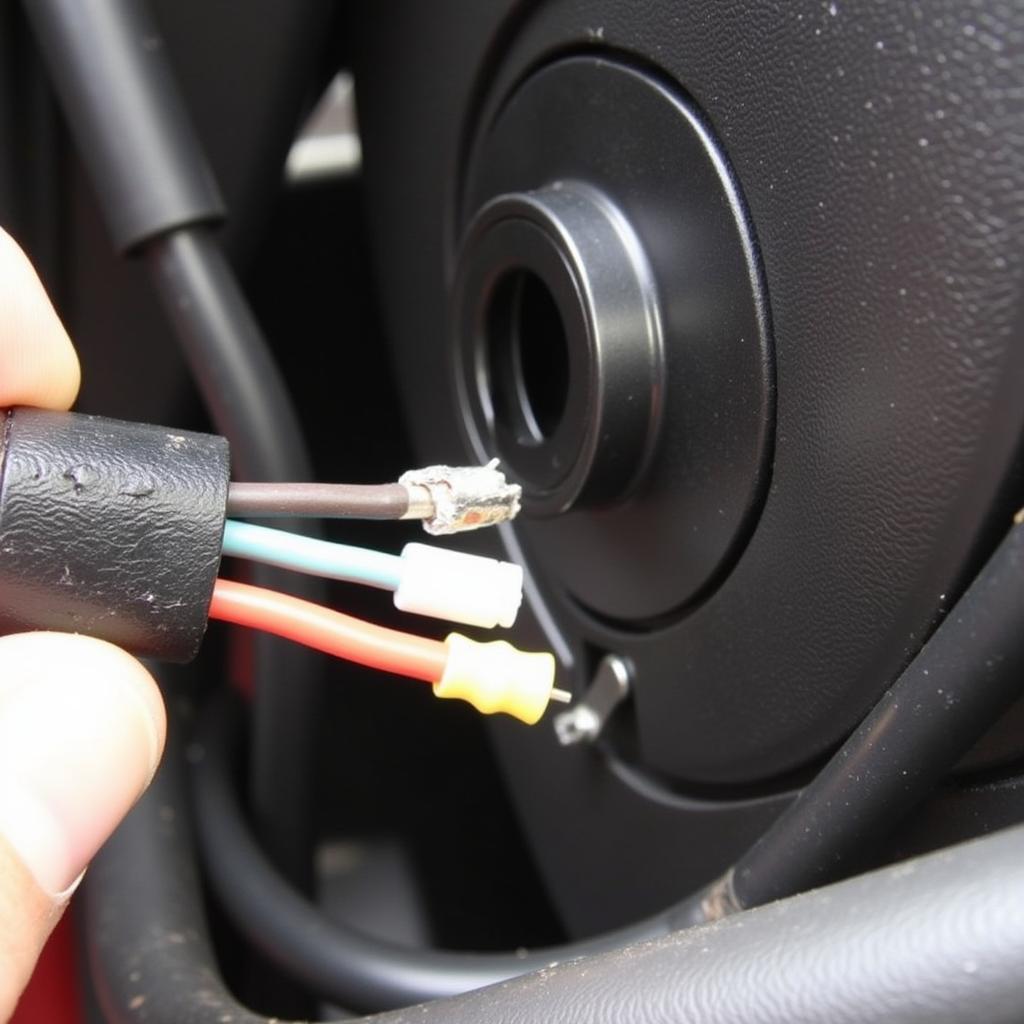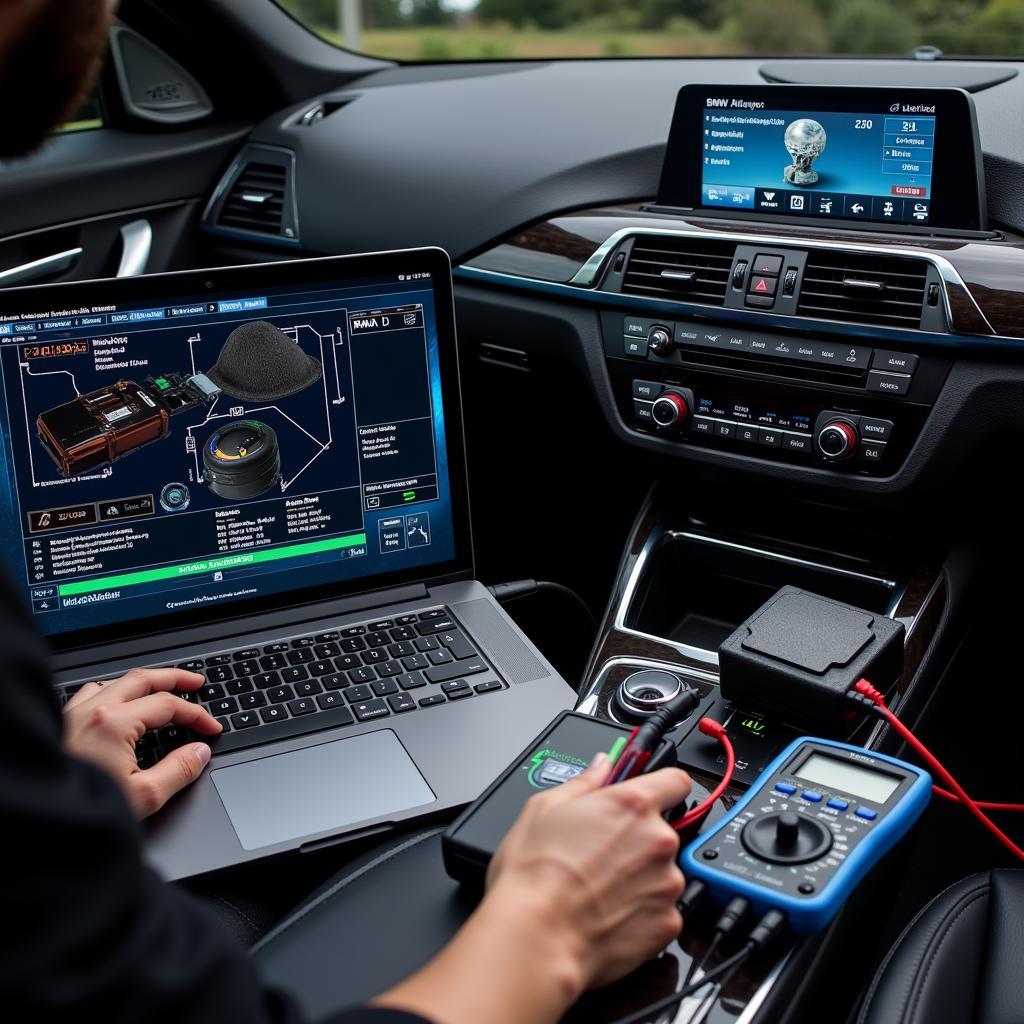The dreaded “bmw frm 8yr 120k” error can leave BMW owners scratching their heads. This guide dives deep into this common issue, exploring its causes, symptoms, diagnostic procedures, and solutions, offering valuable insights for owners, mechanics, and technicians alike.
Understanding the BMW FRM 8YR 120K Fault
The FRM (Footwell Module) is a critical component in many BMW models, controlling functions like lighting, windows, central locking, and more. The “8yr 120k” refers to the typical timeframe and mileage when these modules tend to fail, often due to component degradation or software glitches. Understanding the intricacies of this issue can save you time and money.
Common Symptoms of a Failing FRM
A failing FRM can manifest in various ways, from intermittent flickering lights to complete system failures. Recognizing these symptoms is crucial for early diagnosis and preventing further damage. Some common indicators include:
- Erratic Window Operation: Windows may become unresponsive or operate erratically.
- Malfunctioning Central Locking: Doors may refuse to lock or unlock, or the alarm may trigger randomly.
- Flickering or Non-Functional Lights: Interior and exterior lights, including headlights and turn signals, may flicker or fail to work.
- Inconsistent Indicator Operation: Turn signals may behave unpredictably or not function at all.
- Error Messages on the Dashboard: The car’s onboard computer may display warning messages related to lighting or other FRM-controlled systems.
Diagnosing the BMW FRM 8YR 120K Problem
Diagnosing an FRM issue requires specialized tools and knowledge. While some basic checks can be performed, professional diagnostic equipment is often necessary to pinpoint the exact fault. Here’s a breakdown of the diagnostic process:
- Visual Inspection: Check for any visible damage to the FRM module itself, including water damage or loose connections.
- Code Reading: Use a BMW-specific diagnostic scanner to read fault codes stored in the FRM. These codes can provide valuable clues about the nature of the problem.
- Live Data Monitoring: Observe live data from the FRM using the diagnostic scanner to analyze the module’s behavior in real-time.
- Component Testing: Test individual components controlled by the FRM, such as window motors and light bulbs, to rule out other potential issues.
Repairing and Replacing the BMW FRM
Depending on the severity of the fault, the FRM may be repairable through software updates or component replacement. In some cases, however, a complete module replacement is necessary.
- Software Programming and Updates: Reprogramming the FRM with updated software can resolve software glitches and restore functionality.
- Component Replacement: If specific components within the FRM have failed, they can often be replaced individually.
- Module Replacement: In cases of severe damage or irreparable faults, replacing the entire FRM module is the best solution. This involves careful programming and coding to ensure proper integration with the vehicle’s systems.
Preventing Future FRM Issues
While the “8yr 120k” timeframe suggests a typical lifespan for these modules, proper maintenance and preventative measures can help prolong their life and prevent future issues.
- Regular Software Updates: Keeping the FRM software updated with the latest versions can address potential bugs and improve functionality.
- Protecting the FRM from Moisture: Ensure that the footwell area is dry and free from water intrusion, which can damage the FRM.
- Avoiding Electrical Overloads: Avoid overloading the FRM-controlled circuits by connecting excessive accessories or aftermarket devices.
Conclusion: Tackling the bmw frm 8yr 120k Challenge
The bmw frm 8yr 120k issue can be a frustrating experience, but with the right knowledge and approach, effective solutions are available. Whether through software updates, component repair, or module replacement, addressing the problem promptly can restore your BMW’s functionality and prevent further complications.
FAQ
- What is the typical lifespan of a BMW FRM? While not a hard and fast rule, FRM issues often surface around the 8-year or 120,000-mile mark.
- Can I replace the FRM myself? While technically possible, it’s highly recommended to have the replacement performed by a qualified technician due to the complex programming involved.
- How much does it cost to replace a BMW FRM? The cost can vary depending on the specific model and the labor rates in your area.
- Can a faulty FRM affect other systems in my BMW? Yes, a malfunctioning FRM can impact various systems controlled by the module, including lighting, central locking, and windows.
- How can I prevent future FRM problems? Regular software updates, protecting the module from moisture, and avoiding electrical overloads can help prolong its lifespan.
- What are the most common symptoms of a bad FRM? Common symptoms include erratic window operation, malfunctioning central locking, flickering lights, and error messages on the dashboard.
- Where is the FRM located in a BMW? The FRM is typically located in the footwell area, often under the driver’s side dashboard.
Common Scenarios and Questions
- Scenario: My BMW’s windows are working intermittently. Question: Could this be an FRM problem?
- Scenario: My BMW’s headlights keep flickering. Question: How can I diagnose the issue?
- Scenario: I received an error message related to the central locking system. Question: Should I take my car to a mechanic?
Related Articles
- Troubleshooting Common BMW Electrical Issues
- Understanding BMW Diagnostic Codes
- Maintaining Your BMW’s Electrical System
Need assistance? Contact us via WhatsApp: +1 (641) 206-8880, Email: CARDIAGTECH[email protected] or visit us at 276 Reock St, City of Orange, NJ 07050, United States. We offer 24/7 customer support.


